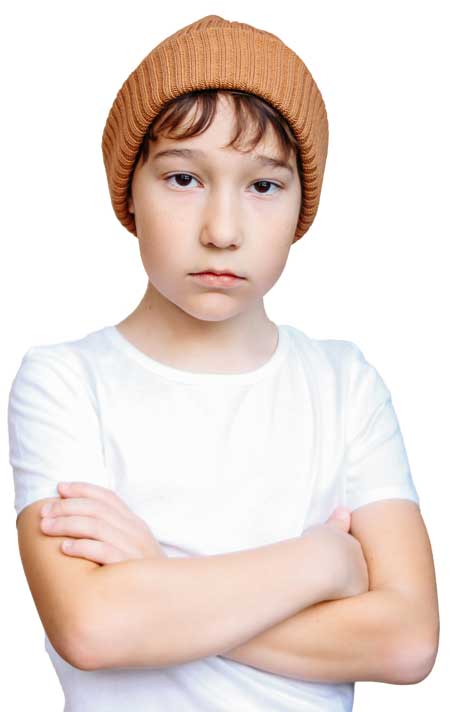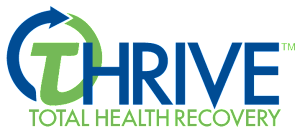“Did you know that the word ‘trauma’ comes from the Greek for ‘wound’?”

As bad as all this sounds, it can be much worse for children.
As adults, we recognize and understand how events impact us, but children exposed to trauma often have no idea what is happening to them. They experience the traumatic event—perhaps a one-time incident such as a car accident or a longer-term occurrence such as physical abuse—and then experience the associated symptoms of trauma. They do not know how to process the symptoms or understand why the symptoms are happening. As a result, these all-invasive wounds might go untreated for weeks, months, or years.
According to Veterans Affairs, as many as 43% of boys and girls experience at least one traumatic event as children. Of those figures, VA goes on to note, “3% to 15% of girls and 1% to 6% of boys develop PTSD.” Post-traumatic stress disorder is a common mental health diagnosis for persons who experience trauma. As high as those percentages are, they do not take into account the number of children who have gone through a devastating experience and not told anyone or receive a diagnosis. In other words, the numbers are likely higher.
For instance, Child Protective Services statistics indicate three million reports received per year, 30% of which indicate abuse ranging from categories of neglect (65% of cases), physical abuse (18%), sexual abuse (10%), and psychological abuse (7%). There are one million cases of abuse a year reported and subsequently confirmed, but there is still no way to know how many couldn’t be verified and how many go unreported. The bottom line is, there are potentially millions of incidents of child neglect and abuse that have caused PTSD and associated symptoms, unbeknownst to sufferers who grow up never realizing they’ve become double victims.
 Without proper help, many turn to substances to self-medicate.
Without proper help, many turn to substances to self-medicate.
The National Institute on Drug Abuse notes that “People are most likely to begin abusing drugs…during adolescence and young adulthood.” These substances can include everything from alcohol and cannabis to methamphetamine, synthetic cannabinoids, acid (LSD), illegally-gained or misused prescription opioid-based painkillers, and more. NIDA cites many contributing causes for why youth might turn to drugs, with traumatic events and mental health conditions being listed as primary causes. In those cases, drug use can turn into abuse and addiction as the drugs alter the person’s brain activity and force them to reprioritize their entire lives. In these developmental years, such actions can shape one’s future, leading to addiction in adulthood and the consequent struggles and dangers that entail.

Even if they do, it can be virtually impossible to deal with the combination of issues alone. “Despite popular belief, willpower alone is often insufficient to overcome an addiction,” NIDA writes. “Drug use has compromised the very parts of the brain that make it possible to ‘say no.’” This is why it is imperative to seek professional treatment and explore therapy options to get well.
If you or someone you care about, has an ongoing history of alcohol or substance use and/or relapse, contact Gulf Breeze Recovery or call: 833.551.2356 to speak to an addiction expert to learn more about their residential program, out-patient program, and intensive out-patient program, and which of these can best fit your individual needs. These programs have helped many people overcome their addiction and embrace their new happy, healthy, substance-free lifestyle.
We help people not just to survive, but to THRIVE!
“Did you know that the word ‘trauma’ comes from the Greek for ‘wound’?”

As bad as all this sounds, it can be much worse for children.
As adults, we recognize and understand how events impact us, but children exposed to trauma often have no idea what is happening to them. They experience the traumatic event—perhaps a one-time incident such as a car accident or a longer-term occurrence such as physical abuse—and then experience the associated symptoms of trauma. They do not know how to process the symptoms or understand why the symptoms are happening. As a result, these all-invasive wounds might go untreated for weeks, months, or years.
According to Veterans Affairs, as many as 43% of boys and girls experience at least one traumatic event as children. Of those figures, VA goes on to note, “3% to 15% of girls and 1% to 6% of boys develop PTSD.” Post-traumatic stress disorder is a common mental health diagnosis for persons who experience trauma. As high as those percentages are, they do not take into account the number of children who have gone through a devastating experience and not told anyone or receive a diagnosis. In other words, the numbers are likely higher.
For instance, Child Protective Services statistics indicate three million reports received per year, 30% of which indicate abuse ranging from categories of neglect (65% of cases), physical abuse (18%), sexual abuse (10%), and psychological abuse (7%). There are one million cases of abuse a year reported and subsequently confirmed, but there is still no way to know how many couldn’t be verified and how many go unreported. The bottom line is, there are potentially millions of incidents of child neglect and abuse that have caused PTSD and associated symptoms, unbeknownst to sufferers who grow up never realizing they’ve become double victims.
 Without proper help, many turn to substances to self-medicate.
Without proper help, many turn to substances to self-medicate.
The National Institute on Drug Abuse notes that “People are most likely to begin abusing drugs…during adolescence and young adulthood.” These substances can include everything from alcohol and cannabis to methamphetamine, synthetic cannabinoids, acid (LSD), illegally-gained or misused prescription opioid-based painkillers, and more. NIDA cites many contributing causes for why youth might turn to drugs, with traumatic events and mental health conditions being listed as primary causes. In those cases, drug use can turn into abuse and addiction as the drugs alter the person’s brain activity and force them to reprioritize their entire lives. In these developmental years, such actions can shape one’s future, leading to addiction in adulthood and the consequent struggles and dangers that entail.

Even if they do, it can be virtually impossible to deal with the combination of issues alone. “Despite popular belief, willpower alone is often insufficient to overcome an addiction,” NIDA writes. “Drug use has compromised the very parts of the brain that make it possible to ‘say no.’” This is why it is imperative to seek professional treatment and explore therapy options to get well.
If you or someone you care about, has an ongoing history of alcohol or substance use and/or relapse, contact Gulf Breeze Recovery or call: 833.551.2356 to speak to an addiction expert to learn more about their residential program, out-patient program, and intensive out-patient program, and which of these can best fit your individual needs. These programs have helped many people overcome their addiction and embrace their new happy, healthy, substance-free lifestyle.
We help people not just to survive, but to THRIVE!
About Gulf Breeze Recovery:
Gulf Breeze Recovery, unlike other treatment centers in Florida, is a non 12 step holistic drug and alcohol rehab that is changing the future of addiction treatment with their THRIVE® (Total Health Recovery) program focused on overcoming chronic relapse.
Gulf Breeze Recovery’s THRIVE® program is a non 12-step approach designed for those who are looking for a drug and alcohol treatment program to produce a different and positive result.
This non-12 step program allows you to drive beyond your addictions and promotes a new outlook on life.
We are licensed by the Florida Department of Children and Families, and our last audit scored 99.7! Also, we are gold certified by the Joint Commission.
Want to read more about Gulf Breeze Recovery’s non 12 step, holistic drug and alcohol rehab? Check out some of our latest posts:
Researchers Identify Role of Key Brain Signaling Protein in Alcohol Use Disorder
January 29, 2021
College Students Who Returned Home Due to Pandemic Drinking Less
January 29, 2021
Overdose Deaths Soar in the Midst of a Pandemic
January 27, 2021
Alcoholism Today in Seniors and Younger Generations
January 20, 2021
End Chronic Relapse and Start a New Life!
At Gulf Breeze Recovery we don’t want you to have just a great recovery, we want you to have a great life!


 Without proper help, many turn to substances to self-medicate.
Without proper help, many turn to substances to self-medicate. Without proper help, many turn to substances to self-medicate.
Without proper help, many turn to substances to self-medicate.






